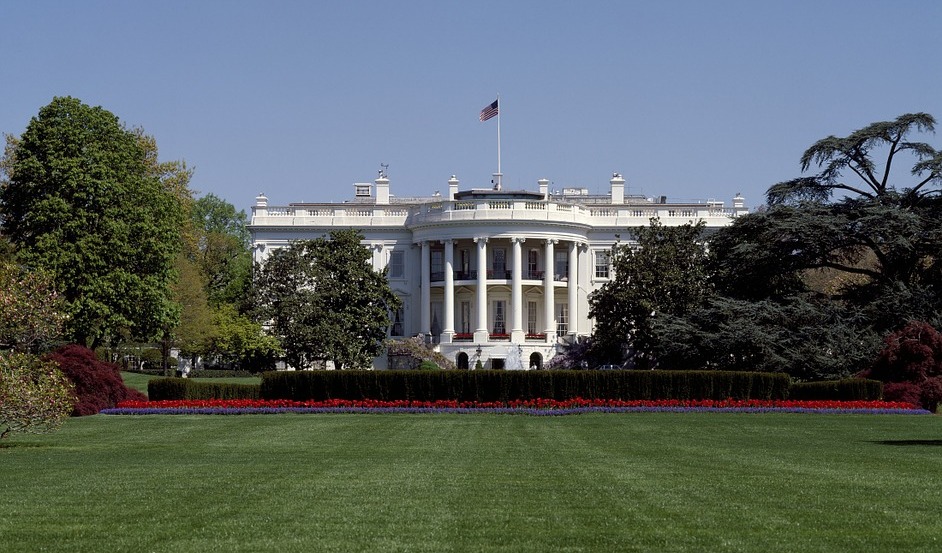Now that the presidential race is hurtling forward at a breakneck pace, we got to pondering one of the many prizes at the finish line: the chance to live in the White House!

Because let’s face it, 1600 Pennsylvania Ave. is not only the seat of power for the free world, it’s also a pretty nice place. Sitting on 18 acres of prime Washington, DC, real estate, its 55,000 square feet featuring 132 rooms, 28 fireplaces, and more than 750 historic artifacts.
All of which got us wondering: How much is the White House actually worth? In cold, hard cash?
Some, of course, might argue that you can’t put a price tag on this symbolic structure any more than you could price the pyramids in Egypt or the Eiffel Tower in Paris. But the Royal Institution of Chartered Surveyors of London, an organization that accredits professionals within property and construction sectors, clearly disagrees. The group, along with L.A. real estate consultant Ann Gray and International Art Advisors president Barden Prisant, decided to crunch the numbers and come up with a real figure.
So what magic number did they arrive at? Drumroll, please.
They calculated that if someone were to plant a “For Sale” sign on the lawn of the White House today, someone would buy it for around $90 million. And that’s just for starters. To arrive at this figure, Gray relied on three real estate valuation staples:
1. How much it would cost to build the White House today: The original construction in 1792 cost $232,000. Taking into account the rising costs of material and labor, Gray estimated that the cost to rebuild today would come in at around $100 million.
2. How much comparable properties would sell for: For a comp, Gray used Donald Trump‘s Mar-a-Lago Club in Palm Beach, FL—often dubbed the “White House of the South”—which is about the same size as the White House (17 acres) with weirdly similar amenities (including fallout shelters, tennis courts, and underground tunnels). Trump bought this place in 1985 for $10 million; today it’s valued at nearly $100 million.
3. How much income the White House could produce: Let’s face it, the White House has way more cachet than Trump’s digs, so to factor that in you’d have to estimate how much money the White House could bring in as an investment property—say, a really nice hotel. A decent comp for that is the Jefferson hotel nearby, where a deluxe suite rakes in $1,200 a night with an 85% occupancy rate. Do the math on the White House’s 16 bedrooms, and they’d net $5 million a year. Over time, this would lead to a property worth $86 million.
Average all this together, and you get a White House listing price of $90 million.
What if the White House came fully furnished?
But there’s more! What if the White House came fully furnished with all the fancy art and accoutrements inside? According to Prisant, that would hike up the price of the White House an additional $160,000 million, for a grand total of $250 million. That figure includes the following:
- Two $5 million Thomas Moran paintings
- A $5-million-plus artwork by James Abbott McNeill Whistler
- A $250,000 gilded-bronze table centerpiece
- A $100,000 grandfather clock
- A few $20,000 sets of presidential china
Could the White House be worth more?
But not all real estate agents agree that the price is right.
“I think $90 million seems on the low side,” says Florida Realtor® Cara Ameer, who researched her own comps to come to this conclusion. “If you look at several significant properties that have been on the market across the country, you can get an idea of value that is north of $100 million.”
One recent case in point: the Playboy mansion, which just sold for $100 million. “It sat on just 5 acres and was 20,000 square feet—less than half the size of the White House,” Ameer points out. “I don’t think it would be out of the realm of possibility to value the White House anywhere in the $150 to $250 million range, depending on what was included. The Playboy mansion had a huge celebrity factor going into the sale, which would be on par with the notoriety of the White House—just a property that everyone knows.”
Another factor Ameer feels may be shortchanged is the construction costs.
“With structures like this, the skill sets involved to replicate some of the more unique and historic features has become a lost art—and finding craftspeople to do these kinds of things may be nearly impossible today,” she says.
Not that anyone will get a chance to rebuild—or buy—the White House any time soon. Still, it’s a fun exercise to see how much it would cost if someone could. Because who wouldn’t find it a hoot to spend a night in the Lincoln Bedroom, knockoff or not?
Published by Judy Dutton on realtor.com.
